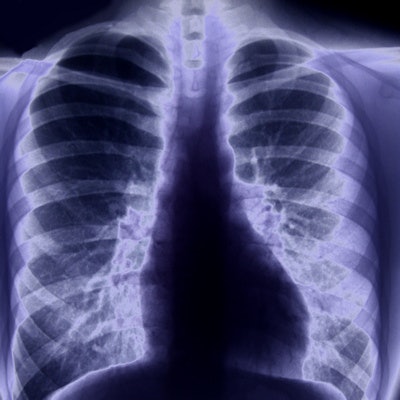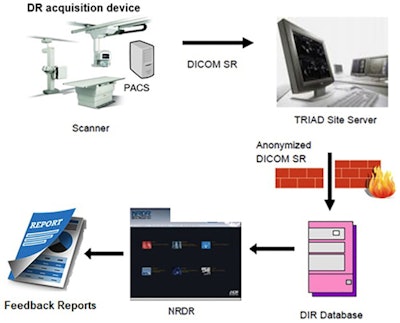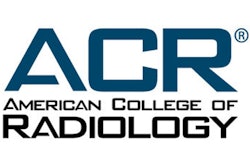
The American College of Radiology (ACR) is launching a new Dose Index Registry (DIR) in digital radiography (DR) to help track and characterize practice patterns and allow facilities to compare their dose indexes to those of other facilities in the U.S.
The main purpose of the dose index is to document practice patterns and, over time, establish benchmarks for radiation dose in common DR examinations, according to a team led by Dr. Steven Don, chair of the ACR DIR digital radiography committee. The registry was explained in an April 26 article in the Journal of the American College of Radiology.
Facilities that participate in the registry will be able to compare their data to regional and national aggregate data and decide if changes in their image acquisition techniques are needed to improve patient care.
Quality improvement using DIR data isn't just about lowering radiation dose, according to co-author William Sensakovic, PhD, chair of the ACR Dose Index Registry, in a recent interview on the ACR's website.
"If a facility's doses are substantially lower than its peers, then it might indicate an opportunity to increase dose and by doing so increase image quality and hopefully diagnostic confidence," he said.
To characterize the new initiative, Don and colleagues used an example of a person prescribed an antibiotic to treat pneumonia. In that case, the U.S. Food and Drug Administration (FDA) demands strict adherence to good manufacturing practices to guarantee that the drug contains the prescribed amount of medication.
This isn't so in radiography, which is the most common ionizing imaging examination with more than 275 million examinations performed yearly in the U.S., including 25 million exams of children. In 2018, an American Association of Physicists in Medicine study on the state of radiography showed that for adult chest radiographs, participating centers had a sevenfold range of radiation exposure and for pediatric extremity radiographs, a fivefold range.
In addition, digital radiography systems are frequently preloaded with age-based anatomical programming at the x-ray generator controls, while the FDA recommends thickness-based technique charts, given that about a fifth of U.S. women are similar in size to an average 12-year-old.
 The workflow of the ACR Dose Index Registry for digital radiography. Image courtesy of the JACR.
The workflow of the ACR Dose Index Registry for digital radiography. Image courtesy of the JACR.The launch of this pilot project is the necessary first step toward the goal of identifying and correcting possible workflow and technical issues in working with the DIR, such as problems in collecting data elements and resolving protocol-naming conflicts, Don and colleagues wrote. The analysis of pilot study data will provide a glimpse into current practice patterns and the magnitude of variation in radiography exposure metrics. It will also be used to help shape the structure of feedback reports to participating sites.
The goal is that the DIR for digital radiography eventually will become as robust as the ACR's registry for CT, which since 2011 has accrued over 50 million examinations from more than 2,100 facilities as of April 2018.
Sensakovic summarized what the new registry could mean for practicing radiologists and their patients.
"If you gain a little bit of knowledge about what typical doses are for a given exam, you can talk more intelligently about what the risks are to given patients and offer them reassurance about their safety. When speaking with referring physicians and patients, it can add confidence that you're doing things right," he said.
The DIR digital radiography pilot is currently recruiting imaging facilities to submit their DR data to help develop the system. A mixture of academic, community, and pediatric facilities is desired to capture the range of current clinical practice, Don et al noted.
Any facility already participating in the ACR CT registry can participate in the DR data repository with no additional charge or paperwork. New facilities will need to register for the DIR and download the ACR's TRIAD software.
Facilities interested in participating or that have any questions could contact Don at the Mallinckrodt Institute of Radiology or the National Radiology Data Registry support staff.




















